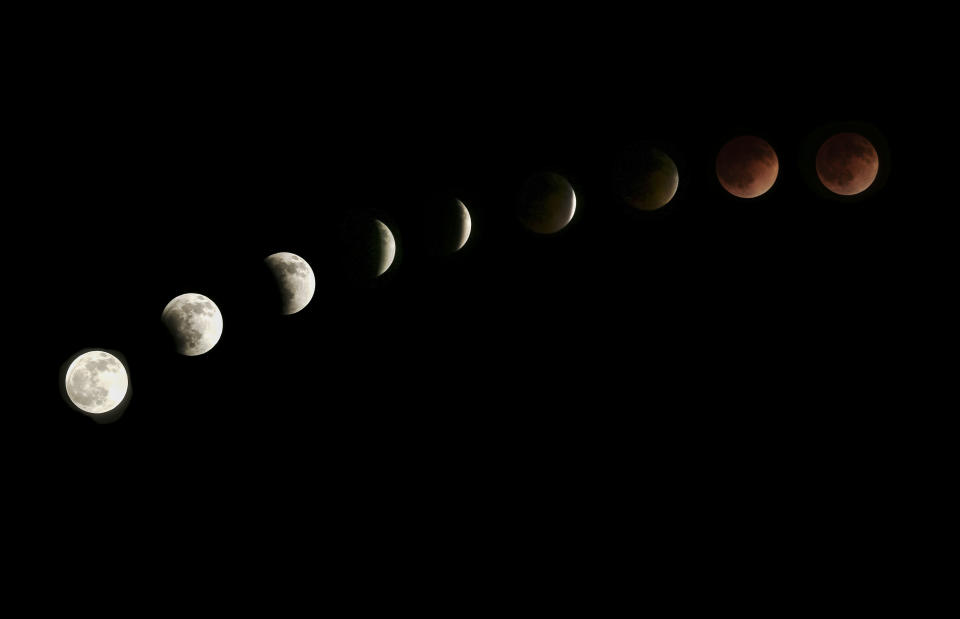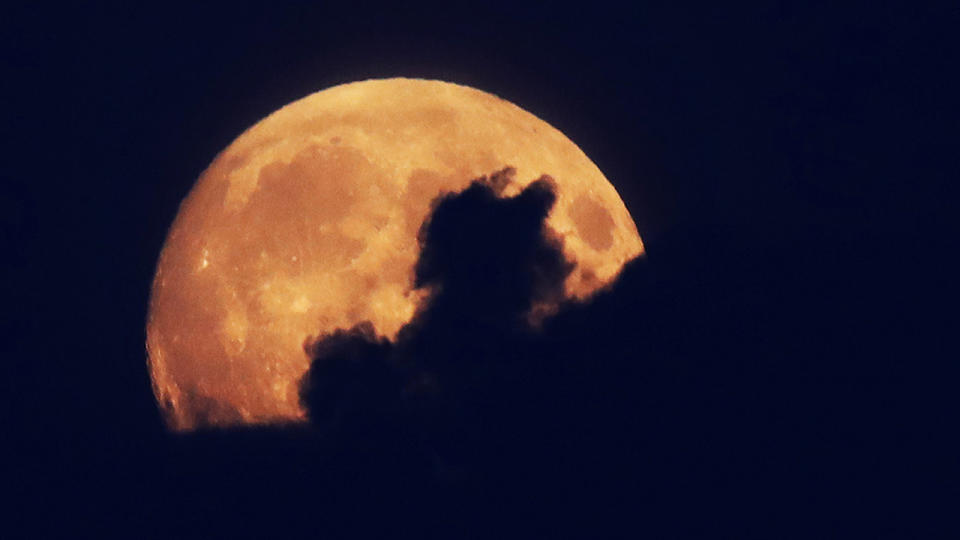Everything you need to know about the blood moon rising this weekend
There will be a rare treat for skygazers around Australia this weekend, with the longest total lunar eclipse this century and an intense blood moon coming our way early Saturday morning.
Right across Australia, everyone will be able to see the moon enter Earth’s shadow, starting around 4.25am AEST with the total eclipse starting around 5.30am.
Totality – when the moon will become a reddish-orange colour – is estimated to last well over an hour.
The entire event, beginning when the moon passes through Earth’s stratosphere, will last more than six hours, according to NASA.

Yahoo News Australia spoke to astrophysicist Dr Brad Tucker from the Australian National University Research School of Astronomy and Astrophysics, about what to expect from this special event.
What is a blood moon and what causes it?
“The moon turns red during totality, which is the period during which the moon is fully in Earth’s shadow,” Dr Tucker said.
“Imagine the sun lights up one part of Earth, and that casts a shadow out into space. At the same time, a little bit of light will get to Earth’s atmosphere.

“We get sunrises and sunsets because the light changes a little bit differently when it’s very far or near to the horizon.
“That light actually keeps going off into space, so a beam of red light from Earth’s sunrise goes out into space and a beam of red light from the sunset goes out into space.
“Those two beams actually fall on the moon, so what you’re seeing is literally Earth’s sunrise and sunset lighting up the moon 350,000km away.”
Where is the best place to see the blood moon in Australia?
“Western Australia is the only place where you’ll be able to see the entire eclipse. On the east, the moon will set below the horizon and the sun will rise, cutting off the last phase,” Dr Tucker said.
“WA will start around 1am, with totality around 3-3.20am, and that will last more than an hour. In the Eastern States, totality starts at about 5-5.20am.
“You’ll need to look west above the horizon; as long as you have a clear view you’ll be able to see it, weather permitting, but it’s expected to be clear. Wherever you can see the sun set is a great spot: an oval, the beach, out on a boat.”

How often does a blood moon occur?
Lunar eclipses are not so frequent and a blood moon is even more rare, occurring around twice every three years.
The general amount of total lunar eclipses in a year ranges from one to three, but the number of total lunar eclipses during a year varies.
The last one we saw was a super blue blood moon, which happened earlier this year, on January 31.
“The next total lunar eclipse isn’t until May 2021, although there will be a partial lunar eclipse in July next year,” Dr Tucker said.
Is it safe to watch?
“A lunar eclipse is completely safe to watch and you don’t need any special equipment,” Dr Tucker said.
“With a solar eclipse, you need glasses and with other astronomical events you’ll need telescopes and so on.

“Here, it’s accessible to everyone, you just need your eyes! You can literally roll out of bed on Saturday morning and see the blood moon.”
Why is this total lunar eclipse so long?
“A lunar eclipse happens when Earth is between the sun and the moon and Earth casts a shadow out into space and the moon passes into the shadow of Earth,” Dr Tucker said.
“So, why don’t we get a lunar eclipse every time we have a full moon? The answer is that the orbit of the moon changes, wobbling by about five degrees; sometimes it’s closer and sometimes it’s further away.
Shocking brawl breaks out at McDonald’s over ‘free soft drink’
Mystery over mum found dead after failing to collect kids from school
“This time, we have it wobbling into the right position. The orbit of the moon can actually vary up to about 50,000 km in distance, which is about two times the width of Earth. That determines, of course, how long the moon is in the shadow. That’s what’s causing this lunar eclipse to be very long.”
Why are people so fascinated by lunar eclipses and blood moons?
“In astronomy we’re often talking about stuff that most people can’t see with the naked eye. With a lunar eclipse, it’s easy and accessible.
“Solar eclipses are more rare, but a total lunar eclipse is still a unique event. It’s the same reason people go out and look at meteor showers – it’s beautiful, and special.”


